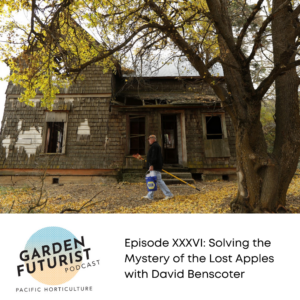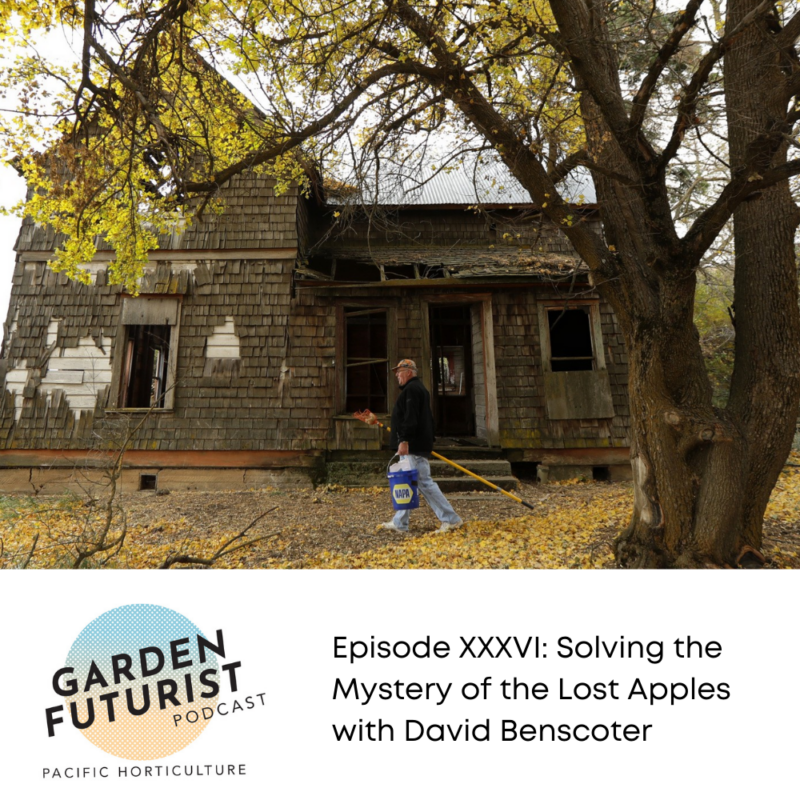
Arcadia in California

Contributor
- Topics: Inspired Gardens and Design

Tityrus, here you loll, your slim reed-pipe serenading
The woodland spirit beneath a spread of sheltering beech.Virgil, Eclogues
Faced with the traffic and smog of Alexandria during the third century before Christ, the Greek poet Theocritus dreamt of Arcadia, as embellished by Virgil, far away in Greece, a pure, simple, rough, mountainous scene with fertile valleys. Here he imagined days spent without the frenzy of business. Leisure made it possible to enjoy the real business of life — a meal with friends, gossip and debate, flirting and making love, musing as love and life fade away. Arcadia has been the most persistent ideal of the landscape for more than 2,000 years. In it every dreamer finds the perfect garden.
Escaping outdoors sets off such reflections. Plato, Cicero, and Virgil stage thoughtful conversations in country settings. In their befountained gardens, Renaissance cardinals imitated classical authors by walking to and fro, talking of Michaelangelo. As Swiss art collector and Napa Valley winemaker Donald Hess appraises fêtes champêtres, it’s “not what you ate or drank, but what was said that counts.”
Californians have for a long time been drawn to notions of Arcadia. Many have called the state Arcadia, and many have sought it there. Arcadia labels one town, a famed 1920s estate in Montecito, and at least a dozen Los Angeles streets. In 1869 the Peoples Publishing Company issued Where to Emigrate and Why: Homes and Fortunes in the Boundless West, in which a section on California concludes: “Wood for fuel is abundant, the soil is generous and produces all that is necessary to supply every material want of the body, and all who are sober and industrious can, in a very short time, realize and enjoy a home where they can, practically, rest “under the shade of their own vine and fig-tree.” The book sells California as Arcadia.
From its beginnings Arcadia was more fiction than fact. An original gene was deceit, for its founder was the product of disguise and seduction. Zeus, ruler of the gods, was in love with the nymph Callisto, a follower of the chaste Artemis. Zeus put on the costume of Artemis, ran with and then seduced Callisto, and so sired the boy Arcas, from whom Arcadia derives its name. Like its progenitor, the place breeds stories of passion and deception, the kinds especially suited to California’s movie industry, which generates illusions for the world.
Arcadia is a transvestite landscape; viewers costume it to suit their moods and dreams. In Arcadia the local scene plays roles other than physical nature assigned it. In this novel world without work, war, or real danger, anything goes: peasants speak like courtiers, women seduce men, savage forests turn into beautiful scenery. To create the proper stage for such benign classicism, gardeners in Italy, England, France, and California redo their worlds: they dress up the landscape as a theater for the performance of idyllic musings.
Whatever the real Arcadia was like — shepherds eking out a bare livelihood around Olympia in southern Greece — has been less important than what later thinkers and gardeners dreamed about it. Imagination peopled the rough landscape with deities who percolated down through the ages. Here Pan came to life — that half-man, half-goat figure who likes to rest at midday and to spy on bathing nymphs. Randy, he pursues, as a chaste French encyclopedia says, “nymphs and boys with equal ardor.” The best gardens aren’t too tidy; they leave room for divine surprises.
The Romans adapted Arcadia and its inhabitants to the sweeter, greener, better watered climate of Italy. Fountains, forests, grottoes, and nymphaeums in gardens, in landscape painting, and in literature enshrined this more temperate, less rugged image of Arcadia for later generations, especially for English schoolboys who had to study Latin and to travel to Italy. Having learned his lessons well, Sir Philip Sydney wrote his novel, Arcadia, the Gone with the Wind of the 1580s. In it he imagined the ideal country “decked with peace, and (the childe of peace) good husbandrie” [with] “a happie people, wanting little, because they desire not much.”
This notion of a place free from want came to mean free from restraint in the minds of English gentlemen in the eighteenth century. Looking for a more relaxed world than the geometry of etiquette and gardens in formal French models, the English invented a new Arcadian landscape. The straight and narrow path gave way to the serpentine; avenues of trees like marching soldiers became relaxed clumps like conversational groups in a salon. Lawns, so easy in England, sprawled over the old boxwood parterres, swept up to the foundations of houses, and, thanks to the hidden ditch — the ha-ha — seemed to wash out into the fields as far as the eye could see. The English garden promoted a vision of uninterrupted vistas, spacious forests, an occasional classical statue, and idling people (that is, aristocratic owners and hired hermits).
In their vast parks rich landowners, often out-of-office politicians, could look over their fantasy landscape republics. Henry Fielding wrote in his 1748 novel, Tom Jones, that Squire Allworthy gazed from his house “across a fine Lawn… a plentiful Spring… forming a constant Cascade of about thirty feet… tumbling in a Fall over… broken and mossy Stones… into a Lake at the Foot of a Hill about a quarter mile below the House… Out of this Lake… issued a River, that for several miles was seen to meander through an amazing Variety of Meadows and Woods, till it emptied itself into the Sea.”

Modjeska’s Arcadia and Arden
We move now to a drawing room in Warsaw in the winter of 1876. The great actress Madame Helena Modjeska is in the midst of plans for escaping Poland’s oppressive Russian rule by coming to California. In her memoirs she recalled: “What wild dreams we dreamt! What visions of freedom, peace, and happiness flitted across our brains! I was to give up the stage and live in the midst of nature, perhaps in a tent! I pictured to myself a life of toil under the blue skies of California, among the hills, riding on horseback with a gun over my shoulder!” Her dream had little to do with reality, and she later admitted “I imagined all sorts of things except what really was in store for me.” She quickly tempered her romantic enthusiasm when she arrived in California, found being a gunslinger not to her taste, and struggled to learn English for her return to the stage.
Eclectic in her reveries about salvation in nature, Madame Modjeska married the Greek myth of Arcadia to the English myth of Arden. The swarthy south joined the creamy-complexioned north. In Warsaw she mused “Oh, but to cook under the sapphire-blue sky in the land of freedom! What a joy! To bleach linen at the brook like the maidens of Homer’s Iliad! [She meant Odyssey.] After the day of toil, to play the guitar and sing by moonlight, to recite poems, or to listen to the mocking-bird! It seemed like being born again.”
Seeking Arcadia in California, Madame Modjeska unexpectedly discovered Arden, Shakespeare’s famed forest in As You Like It, along a canyon in the Santa Ana Mountains. There she found “on an acre of ground a simple shanty, covered with dead branches, vines, and climbing roses. Around it a few rose bushes, a palm, and an olive tree were “the only improvements on nature.” Along the mesa were bands of wild lilac and honeysuckle, and oaks grew among the mossy rocks against a background of distant mountains. The actress observed that the natural scene “looked like fantastic theatrical scenery rather than a real thing, and looking at it, my imagination carried me far, far beyond the hills, back to the footlights again.” She bought the place, renamed it Arden, where she could play at being Rosalind, the young heroine who dresses as a man. Madame Modjeska discovered that her California property had “everything that Shakespeare speaks of… on the spot — oak trees, running brooks, palms, snakes, and even lions — of course, California lions — really pumas.”
Madame Modjeska imaginatively reinterpreted the California scene as both a classical and an English Arcadia, a place for primitive freedoms and for sophisticated recollection of them. Her influence was profound in many ways, particularly on Florence Yoch, who often visited Arden as a young girl, and who translated so many Arcadian visions into California gardens and Elms. Yoch’s landscaping for Tara in the movie of Gone with the Wind combined rough meadows and aged trees with a neoclassical, columned house, standing like a temple in a grove. She connected in the dreams of millions the combination of rural freedom and urban elegance, of wild groves and stately shrines, the Arcadia that Rome and England had displayed in landscape theaters for centuries.
On the stage of the Arcadian garden, each of us, like Madame Modjeska, finds new opportunities to perform. Dressing the landscape with imagination, we dress ourselves. Like our costumes, the best gardens offer fresh roles, whether as shepherd or shepherdess, Pan or Artemis, English lord or lady. In the disguises of this mascarade bucolique we can escape the limits of time and place and find ourselves. Let us give thanks to the Greeks for inventing Arcadia. In its storied scenes, picturesque or savage, flat or mountainous, ordered or disheveled, we extend ourselves and so find new life.










Responses